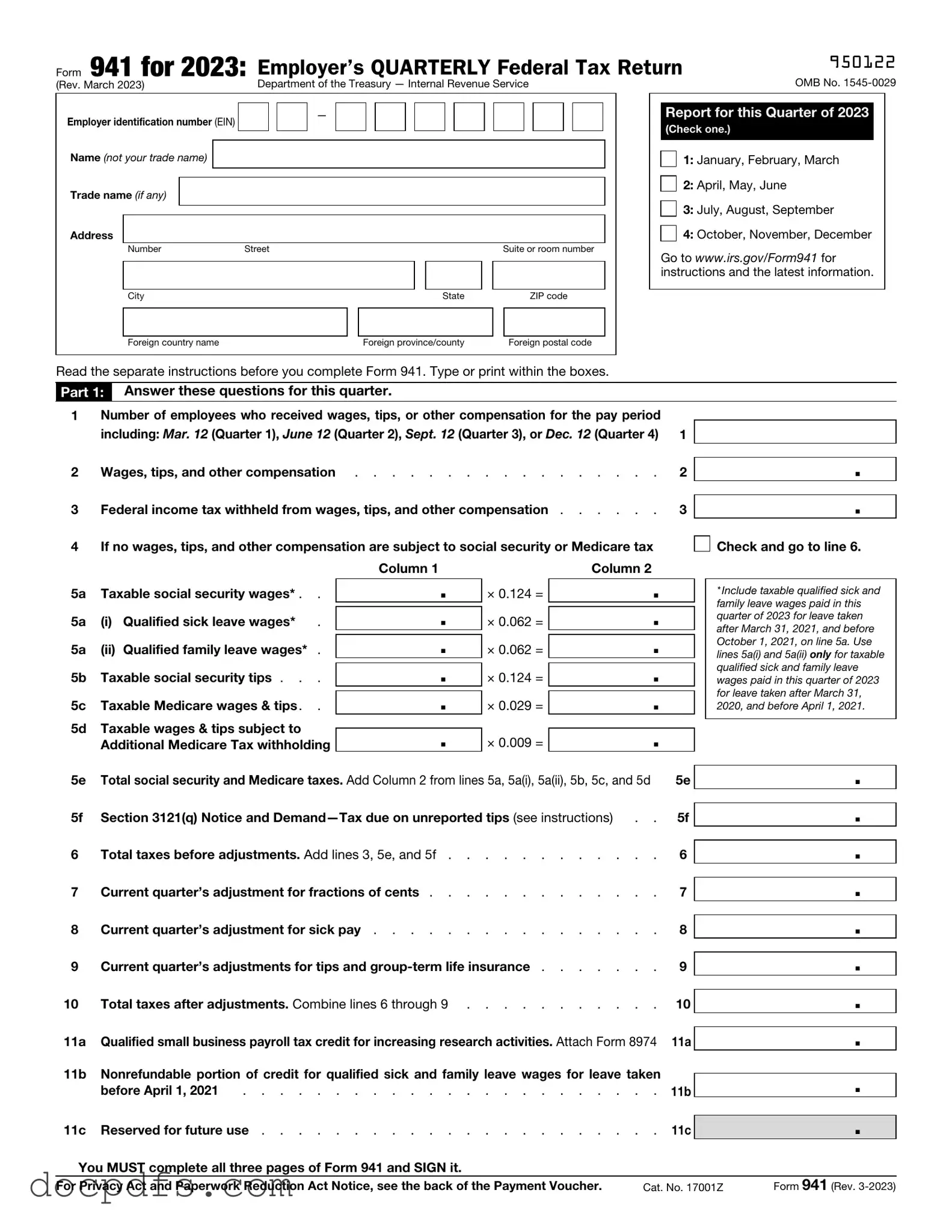The IRS Form 941, also known as the Employer's Quarterly Federal Tax Return, is a form that employers use to report income taxes, Social Security tax, and Medicare tax withheld from employee paychecks. Additionally, it reports the employer's portion of Social Security and Medicare taxes. This form is filed quarterly with the IRS.
Any employer who pays wages to employees must file Form 941. This includes businesses, non-profits, and government entities. If you have employees and withhold taxes from their pay, you must submit this form. However, if you have no employees during a quarter, you do not need to file.
Form 941 is due four times a year, at the end of each quarter. The deadlines for submission are:
-
April 30 for the first quarter (January - March)
-
July 31 for the second quarter (April - June)
-
October 31 for the third quarter (July - September)
-
January 31 for the fourth quarter (October - December)
It is important to file on time to avoid penalties and interest on unpaid taxes.
To complete Form 941, you will need the following information:
-
Your business name, address, and Employer Identification Number (EIN)
-
The total number of employees and their wages
-
The amount of federal income tax withheld
-
The total Social Security and Medicare taxes
-
Any adjustments for tips, group-term life insurance, and other items
Gathering this information in advance will make the filing process smoother.
Yes, you can e-file Form 941 using approved IRS e-file providers. E-filing is often faster and more secure than mailing a paper form. It also allows for quicker processing and confirmation of receipt. Make sure to keep a copy of your submission for your records.
Failing to file Form 941 can result in significant penalties. The IRS may impose a failure-to-file penalty, which can be a percentage of the taxes owed. Additionally, interest will accrue on any unpaid taxes. Consistent non-filing may lead to more severe consequences, including audits and legal action.
Form 941 is available on the IRS website. You can download it directly from their forms and publications section. Additionally, many tax software programs include Form 941 as part of their services, making it easier to complete and file electronically.
